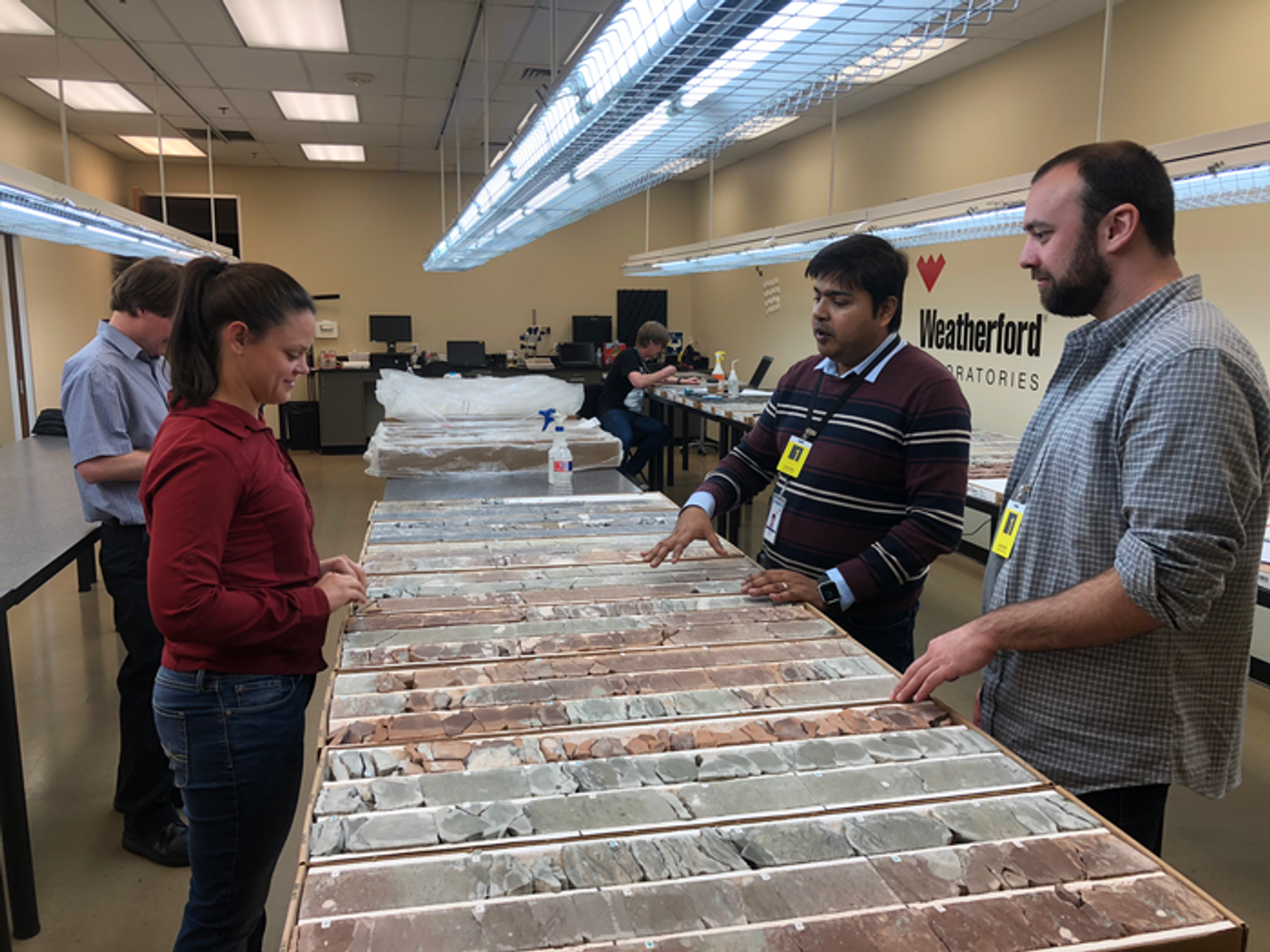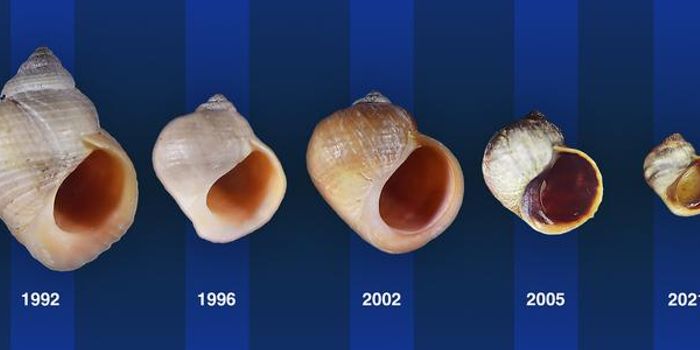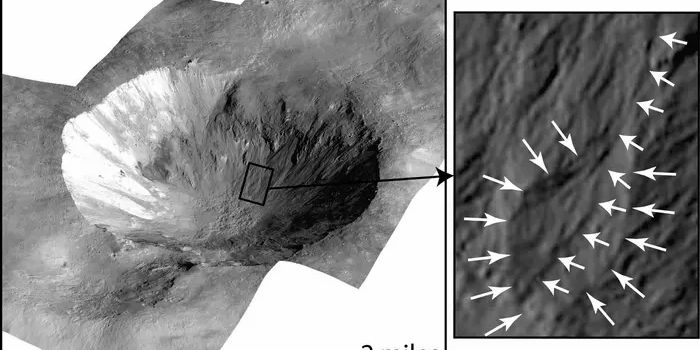Examining Oil to Learn About Earth's Extinction History
In a recent study published in Nature, a team of researchers led by Equinor US examine how the Bakken Shale Formation located beneath parts of North Dakota and Canada can help scientists better understand a series of key events that occurred during the late Devonian Period almost 350 million years ago. One event was euxinia, also known as the depletion of oxygen, with the other being an increase of hydrogen sulfide within large bodies of water.
Researchers observing and discussing rock samples collected from Bakken Shale Formation. (Credit: Alan Jay Kaufman)
“For the first time, we can point to a specific kill mechanism responsible for a series of significant biotic disruptions during the late Devonian Period,” said Dr. Alan Jay Kaufman, who is a Geology Professor at the University of Maryland, and a co-author on the study. “There have been other mass extinctions presumably caused by expansions of hydrogen sulfide before, but no one has ever studied the effects of this kill mechanism so thoroughly during such a critical period of Earth’s history.”
For the study, the researchers developed a new method for analyzing biogeochemical and paleontological data extracted from the rocks within Bakken. This new method allowed the researchers to target a specific point in Earth’s history as to both how and when the events of euxinia and hydrogen sulfide occurred. They analyzed more than 100 shale and carbonate samples collected from Bakken and determined the sedimentary layers helped describe three biotic crises: Annulata, Dasberg, and Hangenberg, with Hangenberg representing one of the largest mass extinction events in Earth’s history.
“We could see anoxic events distinctly marked by black shale and other geochemical deposits, which are likely linked to a series of rapid rises in sea level,” Kaufman explained. “We suspect that sea levels may have risen during the pulsed events due to the melting ice sheets around the South Pole at this time.”
The team also examined how higher sea levels during these events and concluded that the increased levels of nutrients, specifically nitrogen and phosphorus, making their way to the continents which would result in algal blooms that would have produced low oxygen (hypoxic) zones within large bodies of water. These hypoxic zones would have increased levels of hydrogen sulfide in marine mammal habitats, thus killing off the population. Dr. Kaufman suggests the study’s findings are not just indicative of ancient Earth, but of present day Earth due to climate change. He refers to the ocean’s circulatory system as a “conveyor belt” that ferries microorganisms, nutrients, and oxygen around the globe.
“Cold, salty water develops in the North Atlantic region before it sinks and eventually makes its way to the Indian and Pacific Oceans, cycling around the globe. This oceanic jet stream helps to spread life-sustaining oxygen through the oceans,” Dr. Kaufman explained. “If that conveyor belt were to be slowed down due to global warming, parts of the ocean might be deprived of oxygen and potentially become euxinic.”
These same dead zones that Earth experienced in the past could also happen today due to climate change, which would result in a decrease in the planet’s biodiversity and an increase rate in extinctions, Dr. Kaufman notes.
“Our study helps us to understand several things about Earth’s growing pains across a critical transition from a world we would not recognize today to one we would find more familiar,” said Dr. Kaufman. “It provides evidence for a kill mechanism that may be general to many of the many mass extinctions that occurred in the past, but also explains the origin of a major source of oil and gas to the United States.”
How will climate change impact the ocean currents in the coming years and decades, and could it lead to another mass extinction event similar to what occurred in Earth’s past? Only time will tell, and this is why we science!
Sources: Nature, Equinor US, EurekAlert!
As always, keep doing science & keep looking up!









